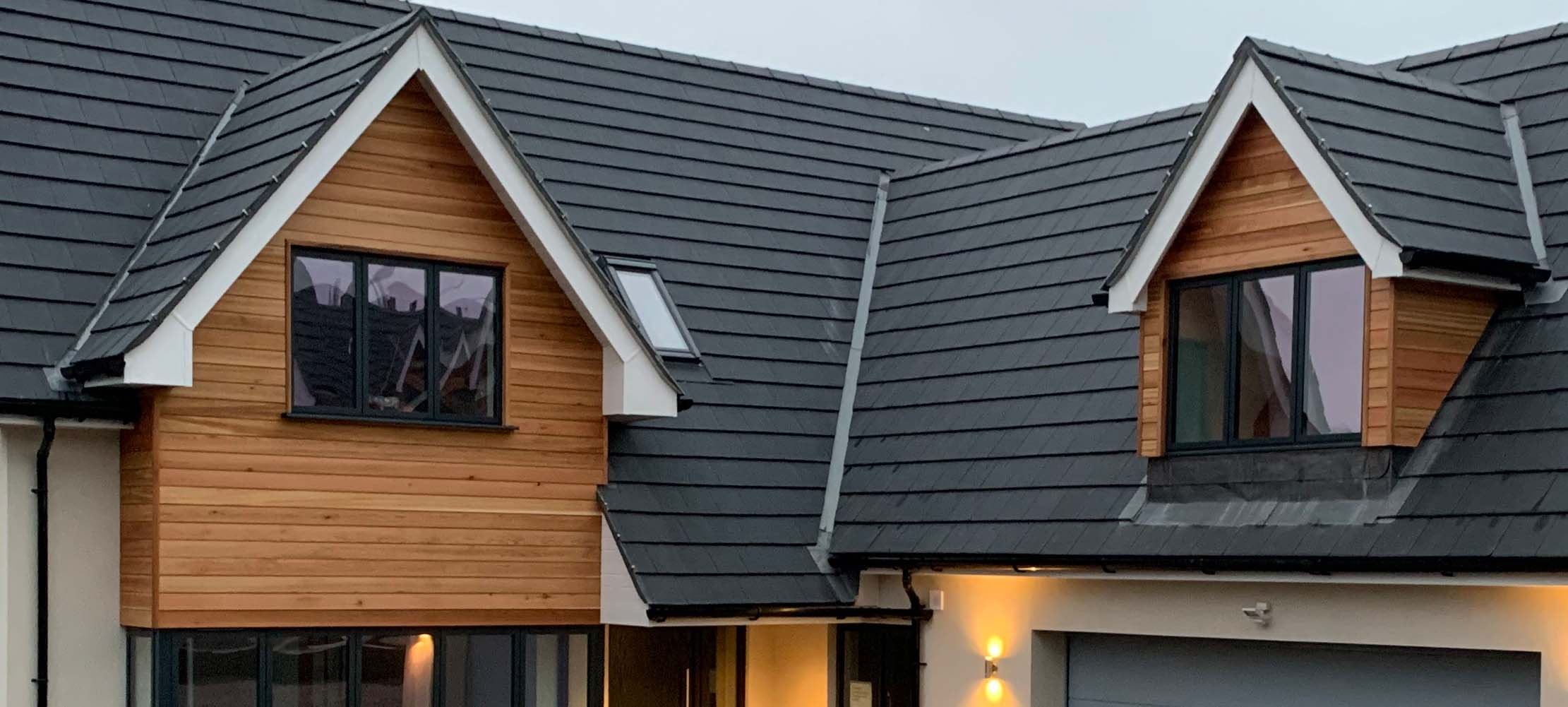Top Tips for Timber Cladding Gables
There are many benefits to installing exterior cladding on the gable end of your home. Not only does it help to insulate your property, saving you money on energy bills, but it also protects the walls beneath from harsh weather conditions, such as heat and dampness.
The gable end of the building is the highest and most visible point of your home, and while cladding is practical, it also looks great!
There are several factors that you need to consider before you go ahead and schedule cladding installation.
In this article, our team share their expert recommendations for cladding the gable end of your home, including which species of wood and profile design is the best, as well as how to improve the longevity of your cladding.

Which is the Best Wood for Cladding Your House?
A great place to start is to decide which species of wood you are going to use. There are many options to choose from and each has its benefits, such as durability and strength, as well as providing different aesthetics depending on texture and colour.
Before you make your choice, it’s important to be aware that the species of wood you choose may affect the overall costs of your project.
Here are 3 of the most popular options for exterior cladding that our specialists recommend for residential projects:
- Oak is a hardwood, it it s naturally tough and durable. While it is one of the more expensive options, it is perfect for external cladding.
- Canadian Western Red Cedar is a softwood, and while it may not be as durable as hardwood options, it is naturally resistant to decay. This means it can be left with minimal maintenance. It is also a popular choice for its vibrant, warm colours.
- Siberian Larch is also a type of softwood, but its high density means that it is resilient to knocks and dents.
If you’re having difficulty deciding which wood type would be best, get in touch with our friendly team at NORclad who would be happy to talk to you about your available options.

Profile Design
The “profile” of your cladding simply means the way that the wooden boards are fitted together.
This is important because the profile contributes to the overall look of your house.
For example, some cladding profiles create a more traditional and rustic appearance to your property, while others look sleek and minimalistic.
Another reason your choice of profile is important is that some designs are more durable than others.
The ideal cladding for the gable end of your house is strong enough to withstand varied weather conditions, especially dampness and heat, which can cause rotting or cracks in the wood boards over time.
Here are the two types of cladding profiles that we would recommend for gable cladding:
Tongue and Groove – Often used in more contemporary designs, Tongue & Groove boardings interlock, this method increases resistance to harsh weather VS open boarded systems.
Shiplap – A more traditional appearance than Tongue & Groove, shiplap profiles typically lap over one another, rather than interlocking Tongue and Groove.
Other profiles such as Waney Edge & Featheredge are often chosen for smaller projects, such as sheds and outhouses for the traditional and rustic aesthetic they provide, these profiles are not the best option for gable cladding for practical reasons.
This is because the wooden boards are cut straight from the trunk, featuring uneven edges and peaks of bark. They are also thinly cut, which makes them susceptible to cracks and warping.
If you do decide that this is the right choice for your project, the key to improving the longevity of your wood boards is through fairly regular maintenance. However, you may find that you will have to replace these boards far sooner than you would if you choose a more appropriate profile.

Wood Treatment
While you can expect quality timber cladding to have a lifespan of 30+ years, it definitely helps to look after it!
As with any other type of cladding, an important consideration for your gable cladding is the use of wood treatments.
Wood preservative treatments can be applied to most types of wood we supply. They can be essential for exterior cladding because they can aide to preserve the colour and condition of the wood, as well as protect it from fungus, mould and decay. The application of treatments and coatings can significantly reduce the necessity for extensive maintenance in the future.
Installation
There is more to installation than just hiring the right team of labourers. We also recommend that you consider the following:
- Hiring a skip to dispose of pre-existing cladding or any other waste that may come from the exterior of your home.
- Arrange scaffolding to be set up around your property. This is crucial for the labourers you hire to use as a platform to work from.
While these measures add to the overall cost of your project, they will help to achieve the seamless installation of gable cladding to your home.
Timber Cladding Solutions from NORclad
At NORclad, we have worked passionately for over 40 years to provide timber cladding solutions of the highest quality.
If you need a bespoke recommendation for timber cladding installation or would like more information on our cladding services, don’t hesitate to get in touch with one of our experts today.












